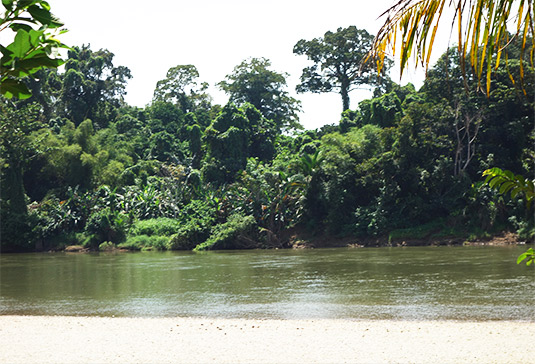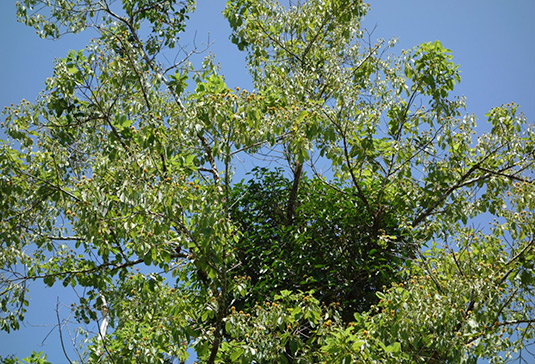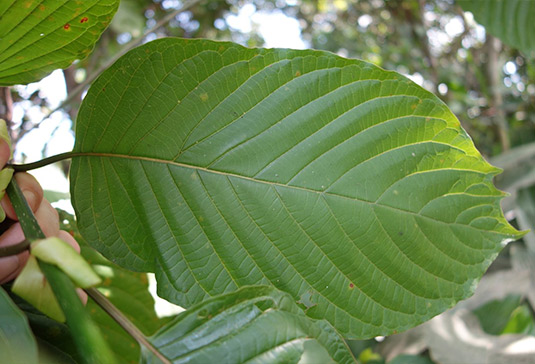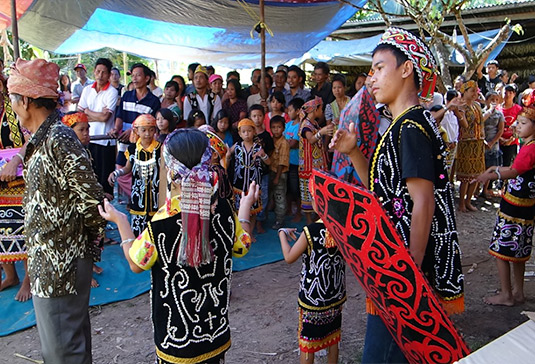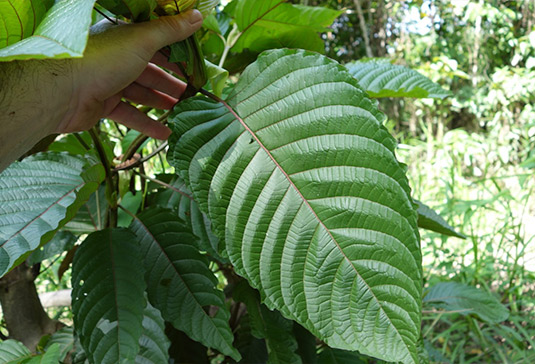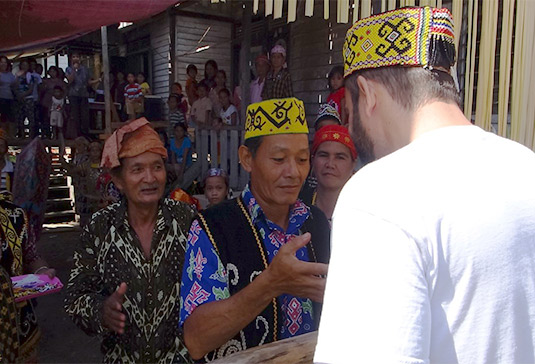About Kratom Infusion
Many people misconceive kratom trees for small plants or shrubs. Most do not realize that kratom grows in excess of 100 feet tall. The majority of the leaf cover is high in the canopy, which makes harvesting difficult and time consuming.
We teach our farmers never to cut the tree down but to prune it for easier future harvesting. Within 6 months it has fully recovered and ready to offer a new harvest. In addition, during the harvesting process we plant two new cuttings for every tree harvested.
We have a huge advantage taking kratom clones from the selected mother trees. When our mother has an alkaloid profile of 1.7%, the new tree starts its life with the same profile and genetics. This allows for continuous progression in quality, and being able to wean out weak trees prone to disease.
Each new generation of kratom starts its life with a naturally high alkaloid profile, which subsequently increases over the coming seasons. We take our kratom business seriously because we understand what it takes to offer you the very best product. We have been importing and distributing kratom since 2001 so you won’t find a more experienced and dedicated team.
Upon harvesting, each leaf is hand-picked, then carefully threaded onto string and hung upside down in simple but very effective drying warehouses. It is extremely important the leaf is dried in the shade and to monitor the humidity at all times.
A poorly dried leaf will turn brown for two reasons. Molding is one, because of excessive humidity, and sun drying. Both destroy the alkaloid profile of the leaf. Always try to get the freshest and greenest leaf with a strong potent aroma. This does not mean a browner colored powder is going to be bad. It just means it could have been a whole lot better!
Kratom Infusion
Our farmers keep us informed about the many inexperienced Indonesians, drying in direct sunlight, and mixing kratom with other botanicals to increase profits. They dry the kratom by the side of the road on plastic sheets. Not out of laziness, but they just don’t have the necessary infrastructure to cure the leaves correctly. This is the main reason the western hemisphere is awash with bad quality kratom. It is always wise to be cautious when looking for a new kratom supplier.
Size Reduction and Tamping
After 2-5 days (humidity depending) the leaf is perfectly dry and crispy to the touch. We always set our targets to have the freshest greenest leaves after drying. On with the gloves and masks for the next stage, size reduction and tamping. Whole dried leaves are worked by hand over a wire mesh.
A large container collects the stems, veins and small leaf particles. The process of tamping is simple and pretty impressive to watch. The resized kratom is put onto a straw mat and continuously flicked up into the air.
The smaller lighter leaf particles project forward into another collection container. The heaver stem and veins are left behind and collected. It is becoming more popular to buy cheaper stem and vein powder. Many use S&V powder to mix with their regular powders to help it go further, creating better value for money.
Logistics and Micronizing
We remove all the stem and vein leaving only fresh green crushed leaf. We do this because the S&V contains less of the principle alkaloids. By removing a weaker part of the leaf, we greatly increase the overall alkaloid profile of the finished product. The premium kratom is compressed into 12.5kg volumetric bales and shipped direct to our distribution, and manufacturing facilities in both Europe and the USA.
Super Micronized Kratom (500 Micron Powder)
The next stage is to micronize the particle size into a fine 500-micron powder. Super micronized kratom has double the surface area making it twice as effective for alkaloid recovery. We have a time and tested method of how we harvest kratom, and where the best areas are located. We specialize in the kratom business so you do not have to worry where to buy this amazing leaf, at its best.
Grown in Perfect Conditions
We have been learning the secrets of perfect kratom growing, and preparation through trial and error. In that time, we’ve been able to verify the mistakes that continue to trip up other farmers. For example, many growers make the mistake of planting trees close to rivers, which subsequently flood during the rainy season. The kratom tree’s roots then become waterlogged, reducing the alkaloid content of the trees by 70-80%.
Our 17 handpicked locations are centered in dense, virgin jungles, with soil so naturally fertile that extra fertilization is unnecessary. These locations are close enough to rivers to receive adequate water, but far enough from the flood planes to avoid flooding.
Identifying Kratom
Another common problem that inexperienced farmers have, is identifying and preparing kratom! Often other plants can be confused for kratom and included in the harvest, reducing the alkaloid content at best and introducing unknown contaminants at worst. Harvested kratom is then often dried in the sun, further reducing the active mitragynine alkaloids and decreasing the efficacy.
Because of these problems, the market is flooded with very low quality kratom. We train all of our farmers to identify and propagate organic kratom. We’ve invested in drying and storage facilities. We installed generators to ensure the humidity can be properly controlled and the kratom effectively dried and stored.
This attention to detail pays huge dividends when it comes to our final product. For example, 1.7mg of mitragynine per gram of kratom. Now that you understand why our kratom is rich in alkaloids, all that is left is to try it for yourself!



